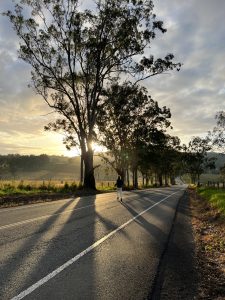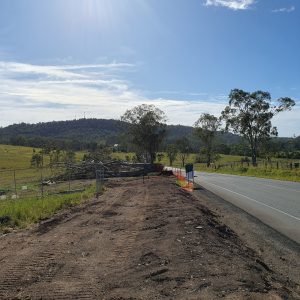In 200 years we’ve basically logged what was here on white settlement in the now MidCoast electorate. We’re left with an even-age treefarm, not a bio diverse forest. Logged every 40 to 60 years (1% pa they claim), means mature trees have no chance to grow back. Hence fauna dependent on them are now endangered.


Mature trees are landscape air conditioners, providing oxygen and reducing heat. They act as sponges, soaking up stormwater, releasing it into air and waterways especially in drought. They filter water from soil to atmosphere, reducing run-off and siltation.Trees are air purifiers, absorbing carbon dioxide to trap pollutants which makes them essential defence against climate change.
Older trees have more flowers, nectar, fruit and seeds to support our diminishing wildlife.
The webs of their root systems filter toxins, protect against landslides and reduce the need for storm drains.
Trees are sentient, communicating via a fungal root system, scientists call the Wood Wide Web, sharing nutrients to young or sickly trees, sharing
information through filaments connecting 90% of plants.
Land clearing causes erosion, siltation clogs waterways causing ever greater floods. Developments are similar, land is cleared to barren earth before building. Fertile farms become urban sprawl, roofs, tar and cement, absorb heat, enhancing greenhouse
effect and extreme weather events. The Insurance Sector knows climate change is real, they’re paying for it!
A sacred cow, the motor vehicle has priority. So to gain 12 inches of roadway, 65 mature trees on Wingham Road were destroyed by Council.
Saplings don’t compensate for these mature trees. Tree planting exercises are good, but it takes 150 years for many natives to mature and in the meantime, climate change races towards us.
Off-sets fail to materialise, at risk of fires, floods, disease, and destruction by livestock.
The Environmental Impact Study on the Wingham Road trees identified 11 hollows in the trees. These nesting boxes, made by nature, take 150 plus years to form. They are scarce and much sought after, essential breeding nests for owls, gliders, reptiles, frogs, bats, parrots, cockatoos, kookaburras, rosellas, lorikeets, wood duck and dollarbirds. The Australian Museum lists loss of hollows as a “Key Threatening Process”.
A habitat hollow doesn’t make a tree dangerous. Trees strengthen their bark around hollows. Hollows are found in older, mature trees which form as a result of wind breakage, lightning strikes, fire and/or from consumption and decay of internal wood by fungi and insects.
Without trees land becomes a desert.
Our Council is responsible for too much destruction throughout our electorate.
Managing risk is Council’s duty – to weigh environmental benefits trees provide in climate mitigation needs to be prioritised more than taking the easy road of costly destruction. The benefits of retaining mature trees exceeds the occasional risk of falling branches and potential accidents.
We live in the widest coastal band of vegetation in Australia, but our council pays little heed to their importance. We need to conserve trees everywhere now. And plant millions more.
Council says Wingham and Taree eventually will join
together as one large residential area. Sydney, Hunter and coastal massed suburbs come to mind, is that really what we want?
Nature is the charm and attractiveness of our area. MCC is ruining the picturesque, meandering tree-lined character so vehicles (specifically V-Doubles) can go faster. We know speed kills! Slowing down avoids potential for head-ons. Install crash barriers, reduce the speed limit, save trees.
Council has Water Catchment Officers an Arborist and an Ecologist on staff. There is scope for councils to take their own path, I’m told Austroads regulations are not strict. Roadside margins could become wildlife corridors linking nature reserves. The UK and the Netherlands are re-wilding nature strips.
Go to expensive city suburbs, you will see big trees in abundance. The wealthy value trees. Try cutting down healthy trees in Woollahra or Sydney’s North Shore! Look at Carnley Avenue in Newcastle! If they can be exceptions to Austroads regulations why can’t we?
There is an urgent need for MCC to become nature’s custodians, to properly evaluate the services trees provide and see them as valuable assets rather than a problem.
Jennifer Allison
Wingham ratepayer and MidCoast Council Volunteer
Editors comment: So called exclusive developments design around mature trees to enhance the homes . . . and price.
The familiar excuse for knocking down trees is that their roots could be a worry. No matter what developers may say, the benefits to communities keeping shade and moisture cooling trees, are more important. Look at all the massive trees close to the front doors of terrace homes in trendy Sydney.
Has anyone enquired into the serious qualifications of council’s environmental staff? More than a couple of months at TAFE is required to know exactly what you’re doing in these fields.
We know there is a serious lack of Council staff to maintain/trim trees in such a large electorate, as one can tell by the neglect along roads, fence lines and tree trimming under powerlines. (Many residents have had to fight to stop their trees being totally removed rather than trimmed because council staff can’t get around where needed often enough.) DM
